
Piercing the veil
A new exhibition at Buxton Contemporary finds a rich complexity in the shadowy terrain between life and death.
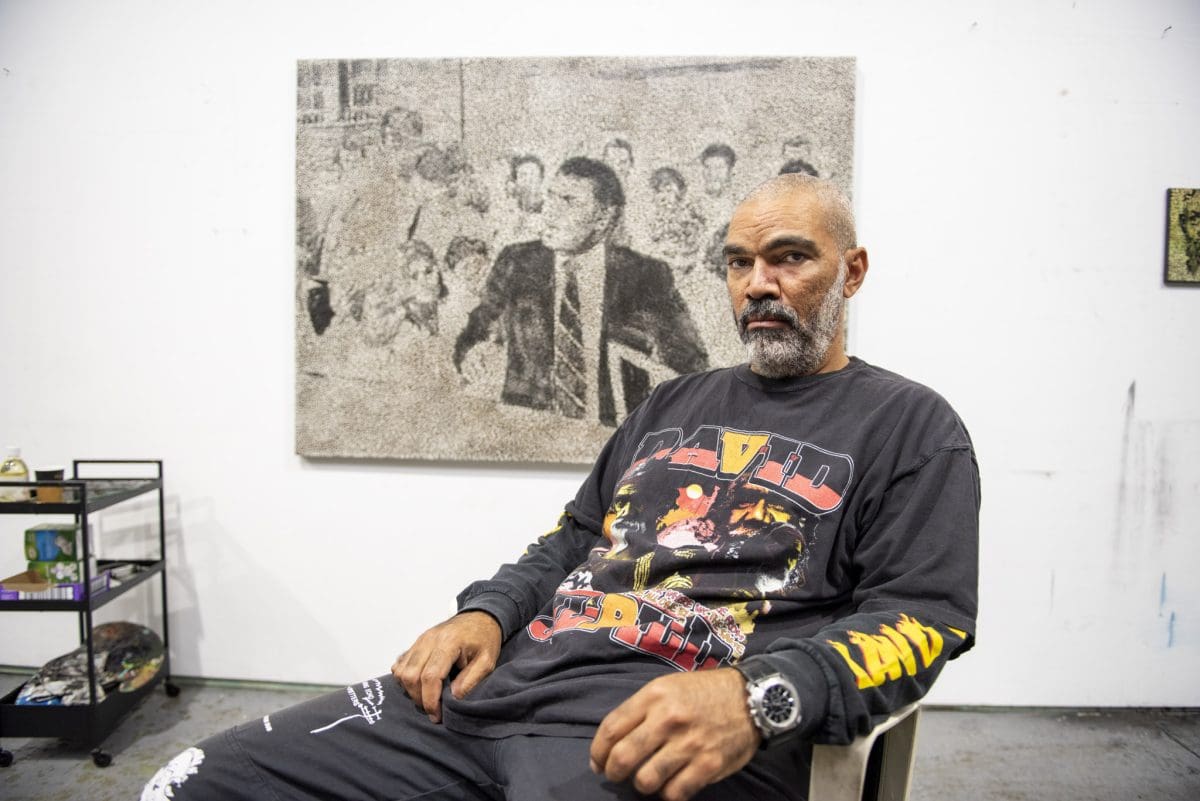
Photographs by Hamish Ta-mé for Art Guide Australia.
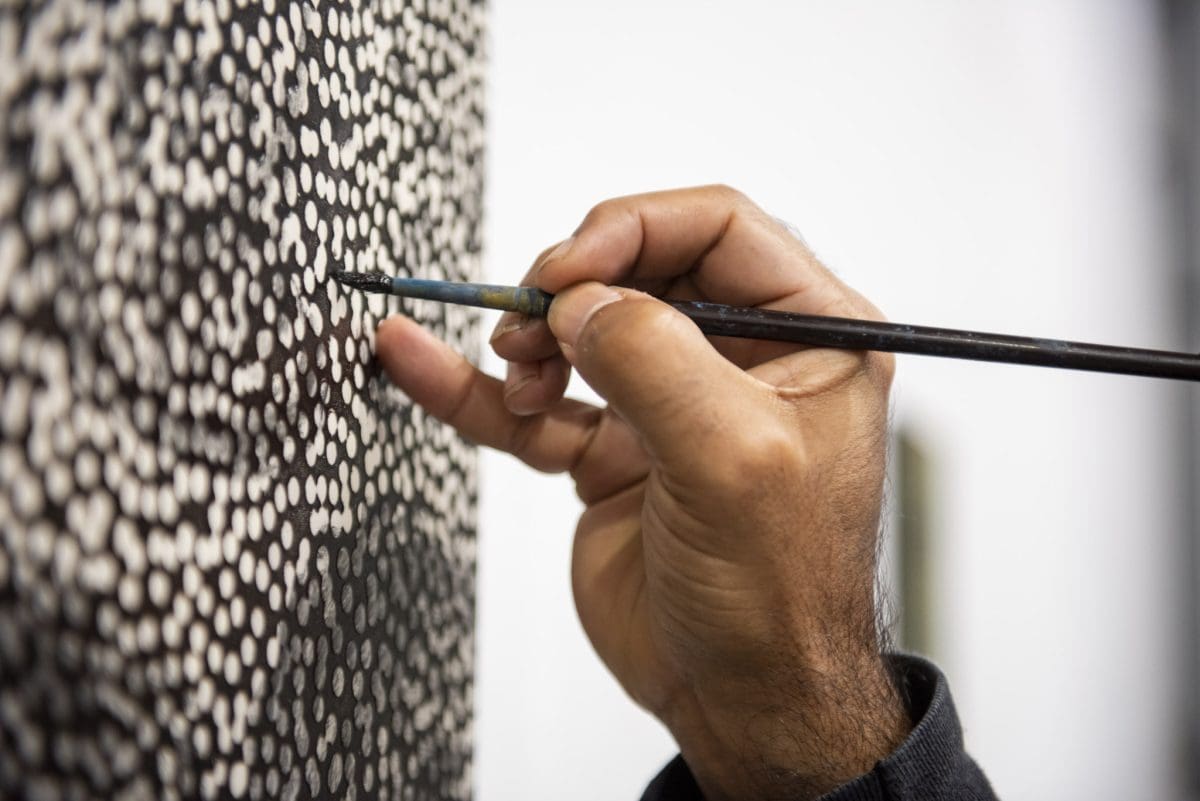
Photographs by Hamish Ta-mé for Art Guide Australia.
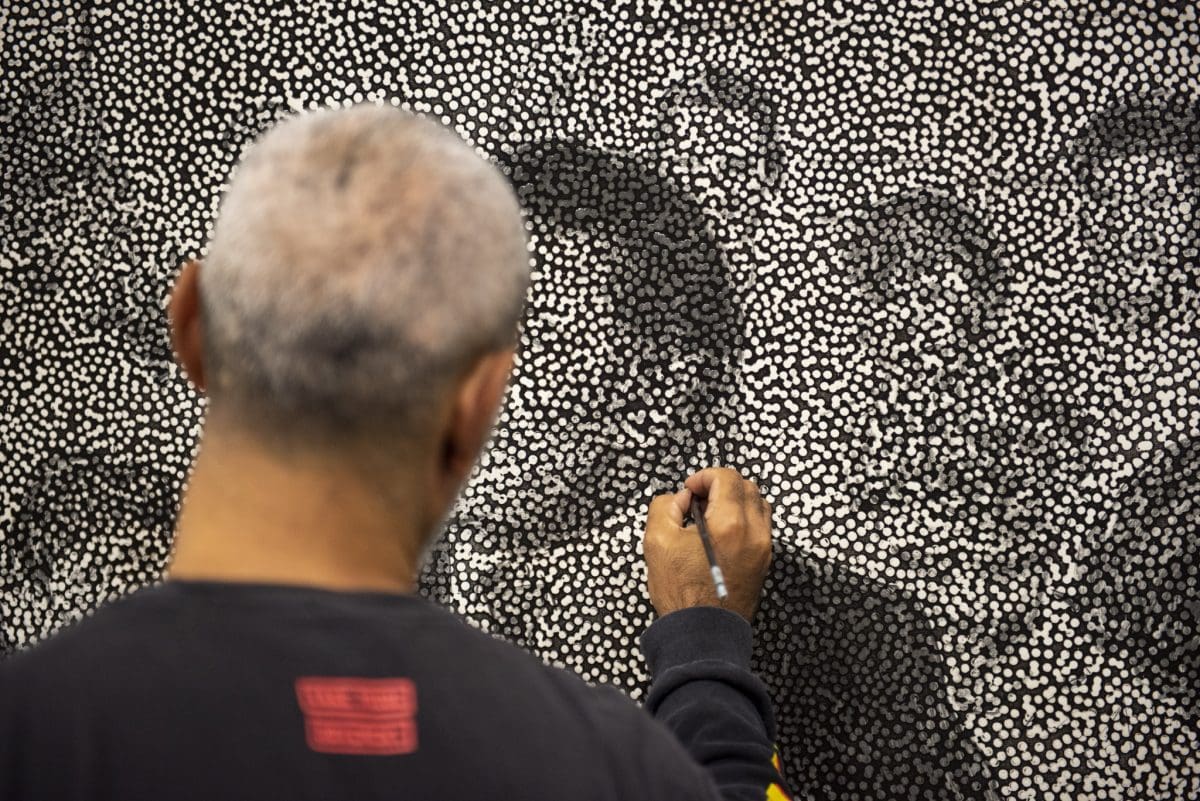
Photographs by Hamish Ta-mé for Art Guide Australia.
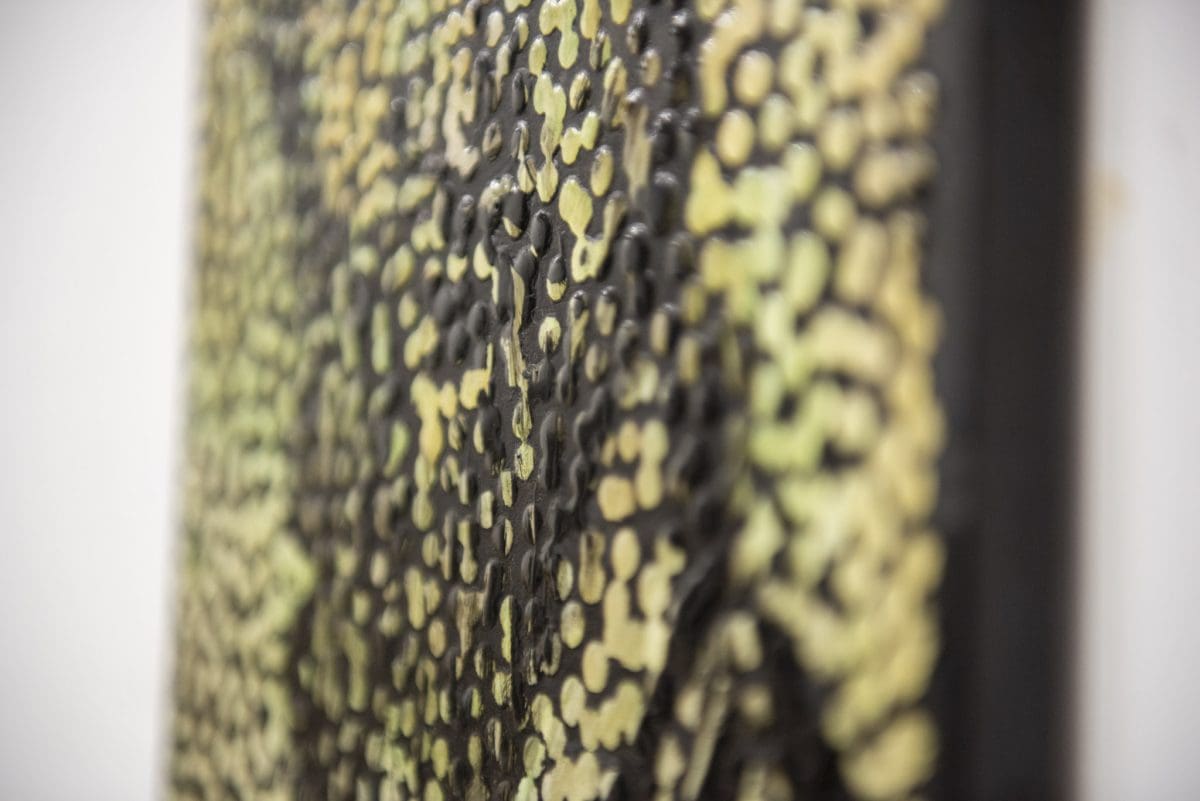
Photographs by Hamish Ta-mé for Art Guide Australia.
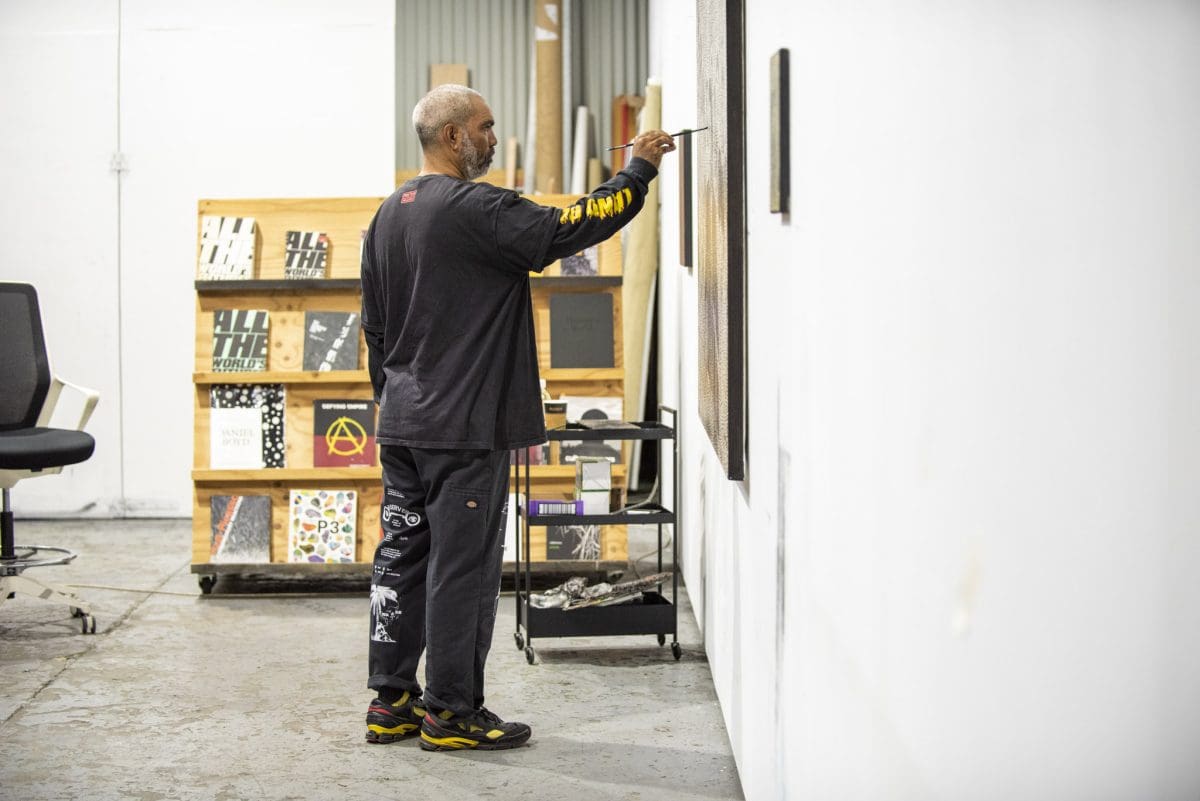
Photographs by Hamish Ta-mé for Art Guide Australia.
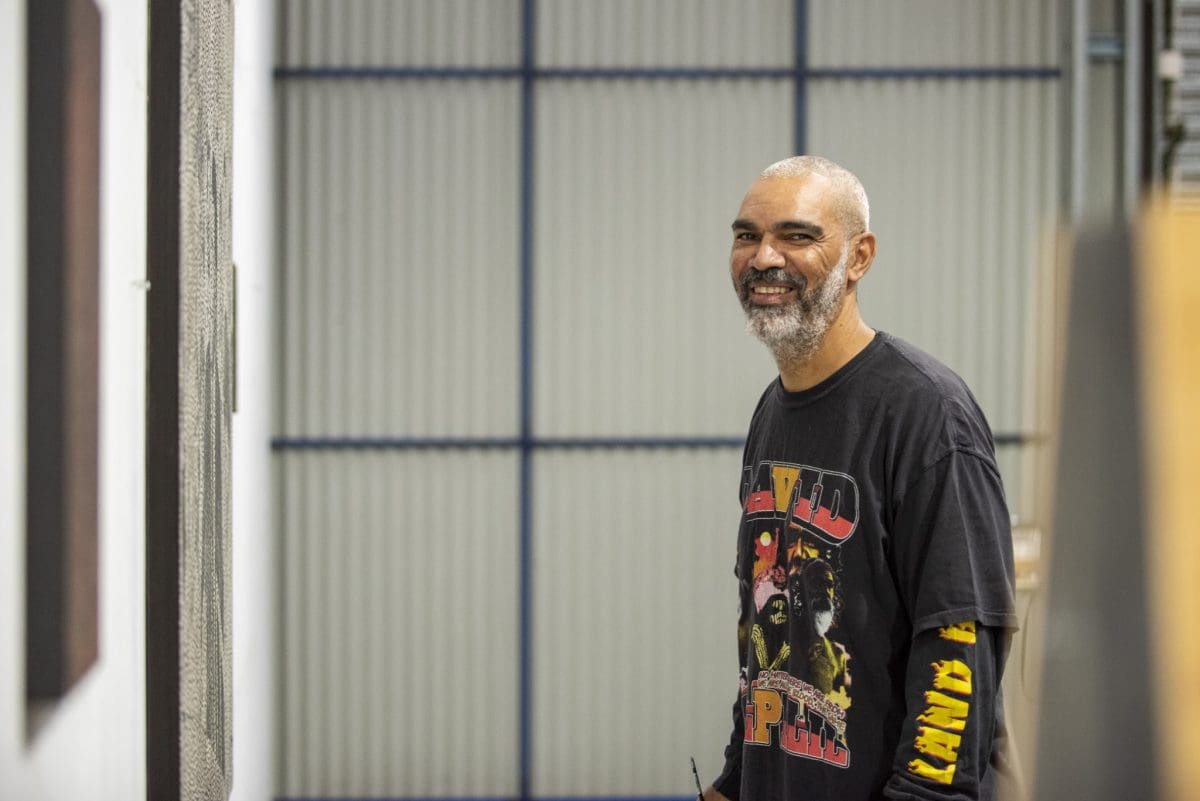
Photographs by Hamish Ta-mé for Art Guide Australia.

Photographs by Hamish Ta-mé for Art Guide Australia.
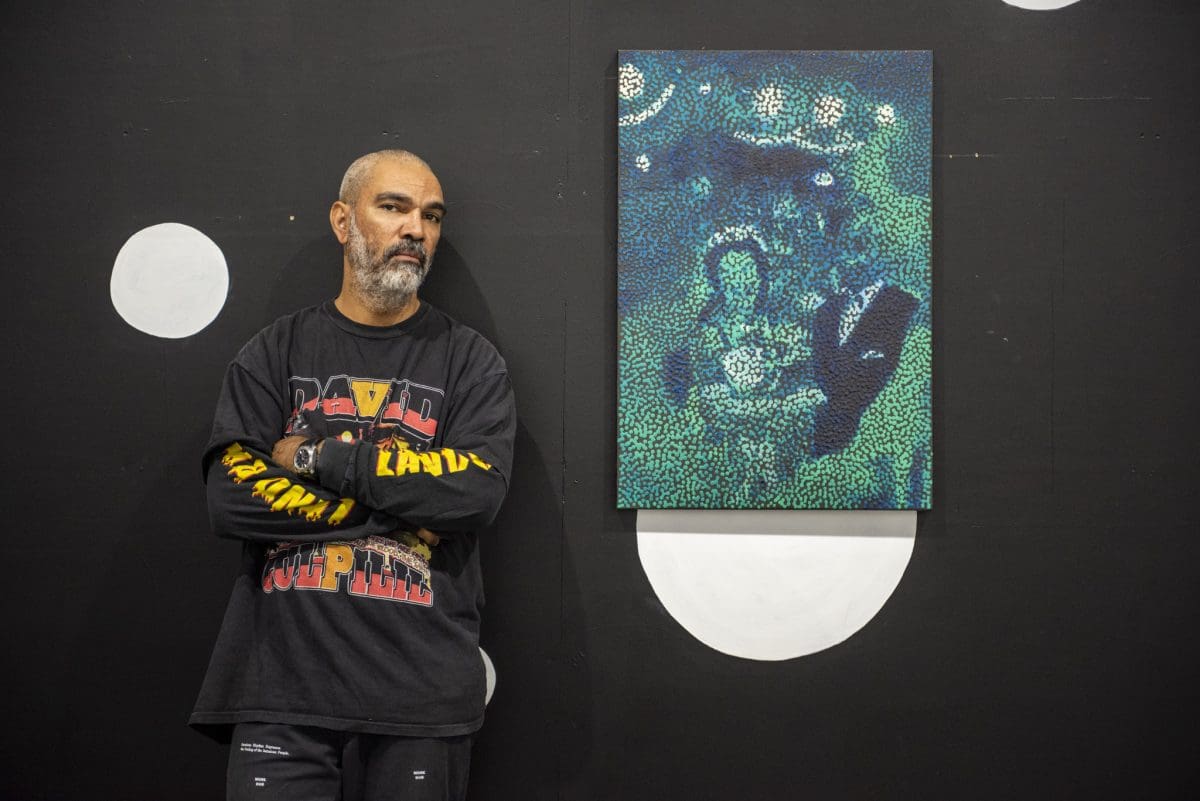
Photographs by Hamish Ta-mé for Art Guide Australia.
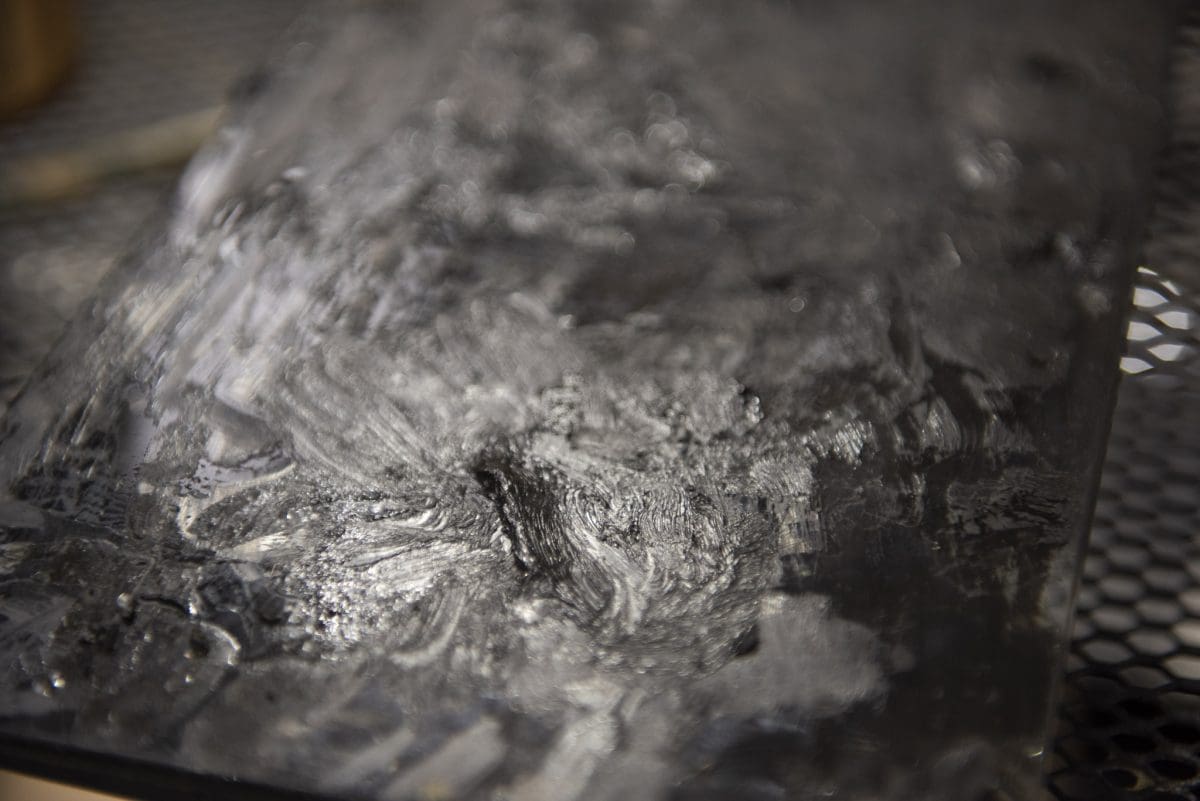
Photographs by Hamish Ta-mé for Art Guide Australia.
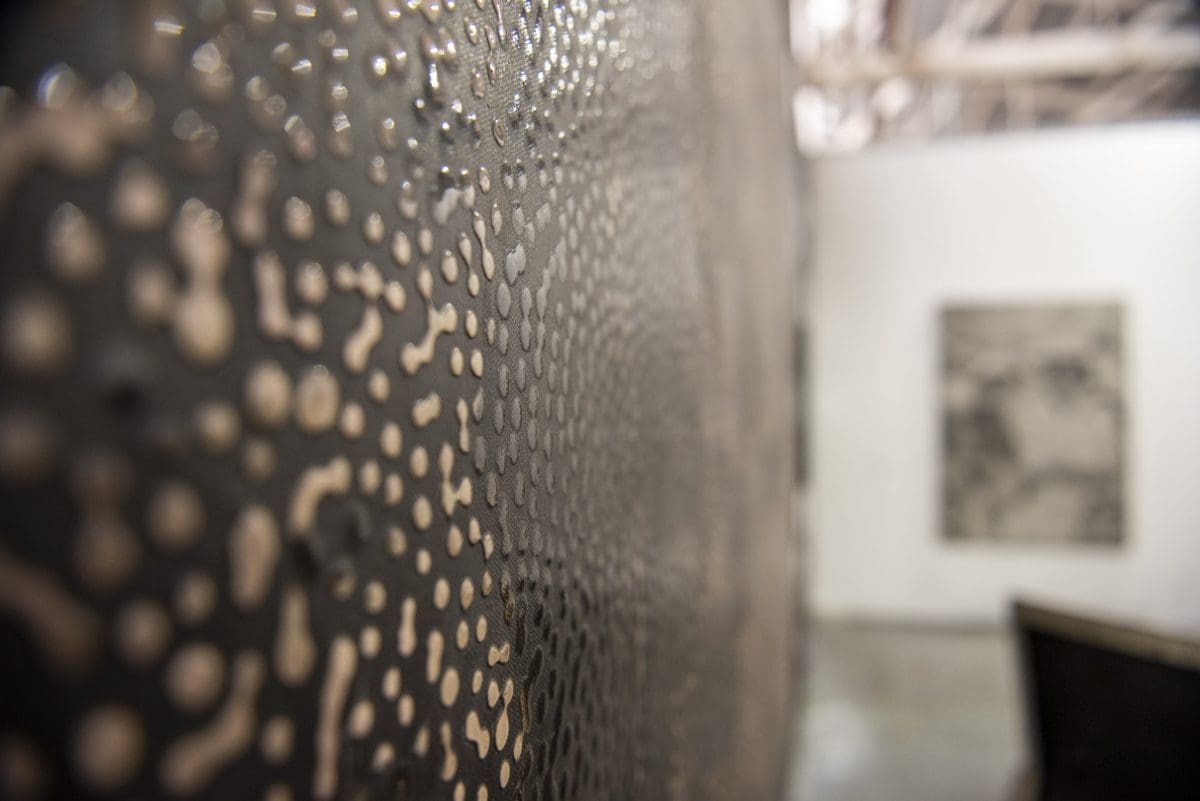
Photographs by Hamish Ta-mé for Art Guide Australia.
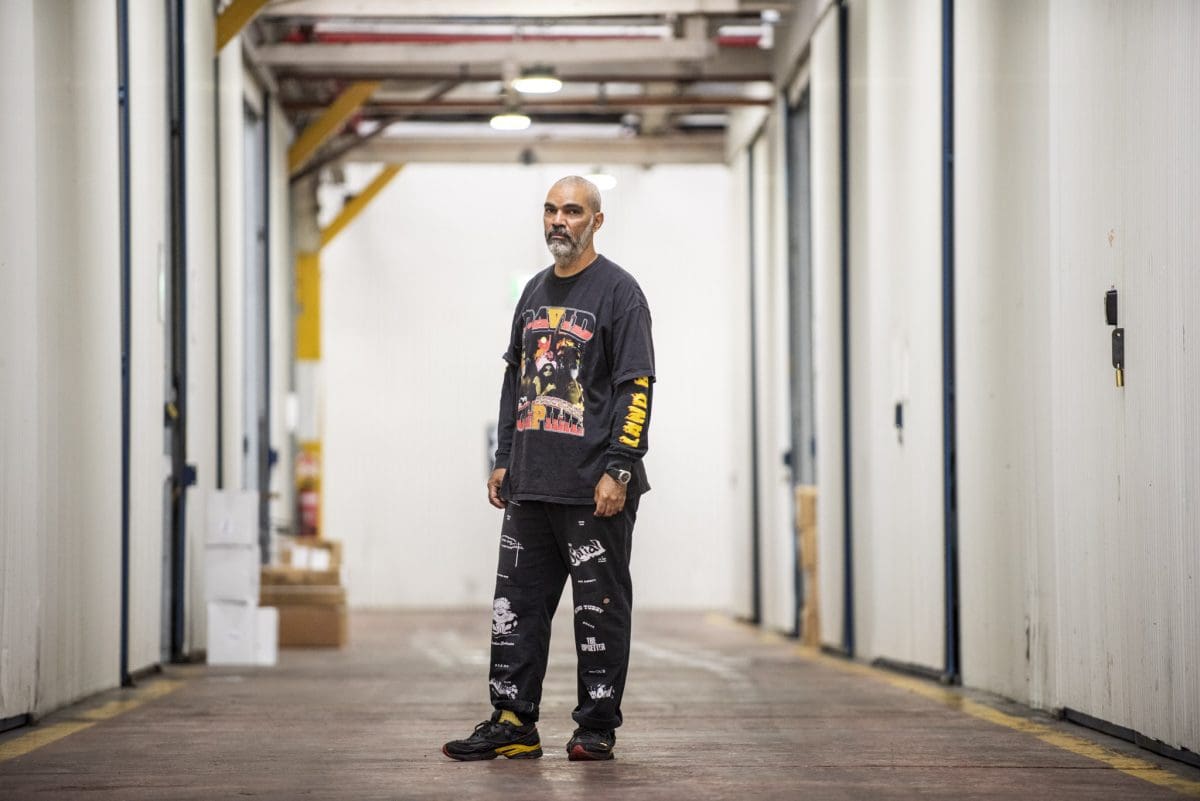
Photographs by Hamish Ta-mé for Art Guide Australia.
For Daniel Boyd, the past isn’t a single story. It’s a source material that changes depending on who’s looking at it, a set of fictions that can be cracked open and remade. The renowned artist, a Kudjala, Ghungalu, Wangerriburra, Wakka Wakka, Gubbi Gubbi, Kuku Yalanji, Yuggera and Bundjalung man with ni-Vanuatu heritage, is best known for shimmering paintings comprising tiny ‘lenses’. This metaphor for how we see, what’s hidden and exposed when we look at an image, also extends to the sculptures and spatial interventions that are increasingly guiding his work.
Boyd works out of a sprawling Marrickville warehouse that hints at the poetics of his practice. Every element speaks to a careful geometry— from the paintings that command each wall, their proportions playing off each other, to the art books carefully displayed in a wooden case. Here Boyd, who’s preparing for his solo Treasure Island at the Art Gallery of New South Wales, speaks about wrestling with the language of representation and challenging his viewers’ perception of the world.
Place
Daniel Boyd: My studio offers an accessibility that I wouldn’t have elsewhere. We exist in a small bubble. I live 500 metres from here and my kids go to school close by. This studio is also conducive to creating larger works. I was in the Venice Biennale in 2015 and [in a previous space] had to paint the painting on its sides. Venice was the first time I saw it in its position upright! Now, there is less stress being able to make large-scale works as I have the opportunity to experience [them].
It is hard to manage a regular studio practice [but] I try to keep normal studio hours. In the beginning, there were times that it was about being inspired to be in the studio. But once you get into the rhythm of a studio practice, it is a pretty straightforward thing—you come in and have to work. There may be something that informs how I start: a feeling, an event that happens in the world. Each work relates to another work and hopefully people see that. My work is not chronological. I see my paintings as [part of] a whole.

Process
Daniel Boyd: When I first started, I was trying to understand the language of representation. I was at art school and the National Portrait Gallery had purchased this [historical] painting of Lieutenant Cook.
I had an interest in portrait painting, figurative painting—and the images that have a lot of presence in Australian culture are those related to British imperialism and colonialism. Because of the forced dislocation of my people, this was my cultural inheritance. My parents and grandparents were afraid to speak about their experience. If you don’t fit within a canon—you obviously have to question it, expand it. So, my first works were about trying to question that linear narrative, trying to make sense of where I fit. I took a painting of Cook and reworked it. I guess it was about questioning influence and authority.
[After] painting my No Beard works [portraits created in the 2000s reinterpreting colonial historical figures], I felt like that language had run its course and I became interested in wider things. My idea of the lens was about trying to create a surface that wasn’t static and about exploring our relationship to light. It started as a way of abstracting something, about a different way of seeing something. It was a representation of concealing and the power of withholding. If you have a singular narrative, you mythologise around a singular narrative and you are negating other experiences. Hopefully this helps people see this in a more empathetic way.
A photograph is a window into a particular moment in time and space. But a still image means so many things to so many different people. There’s not just one way into it. It’s about multiplicity. [For me] it always starts with the audience. The audience is there to activate the work and the way they move in front of my work gives it life.
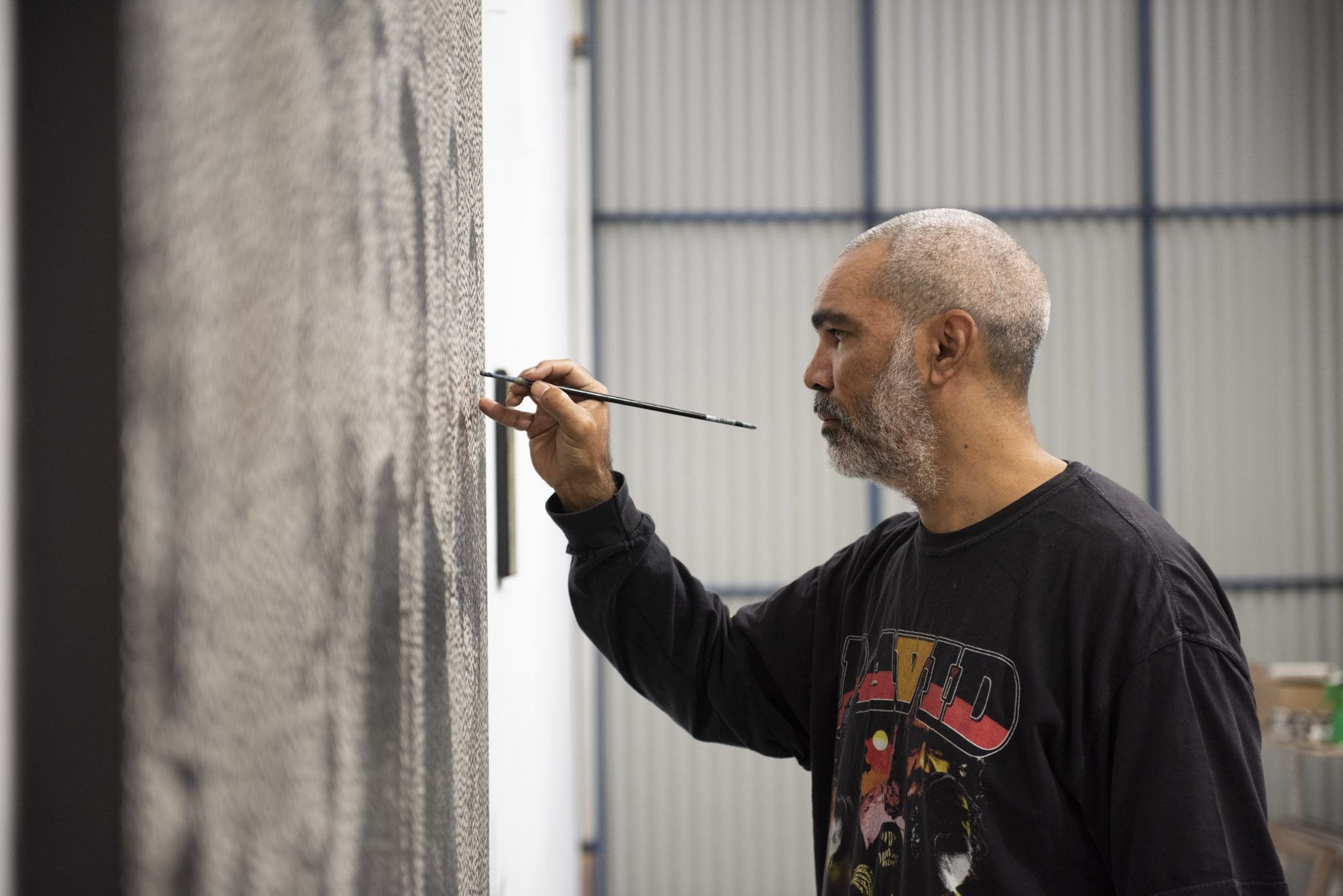
Projects
Daniel Boyd: I always saw myself moving in the direction of [larger works]. It was just about finding the right opportunities. When I got the brief for the [Australian War Memorial] commission, they kind of wanted something on a plinth in a very traditional language. And I just didn’t know how all of these nations who were here before the British colonised this continent could share a relationship with the idea of protected country. So [For Our Country, a recent sculpture for the Australian War Memorial] had to relate to that idea of multiplicity. For Our Country operates in all these different modes. People can go there to contemplate, they can go there to mourn, they can go there to pay respect. For me, For Our Country wasn’t about people fighting for the Australian forces, it was about the frontier wars as well. Trying to represent history is so flawed.
I first used the reference to Robert Louis Stevenson’s novel Treasure Island when I was in art school. Last year, I had a show in Seoul, South Korea called Treasure Island that looked at the idea of power and representation, the will of a particular culture. It was about how people form understandings and project it onto the landscape. This idea was there from the very beginning. When I painted We call them pirates out here [in 2006] I took the two Aboriginal men out of the painting and replaced them with grass trees, which were known as blackboy trees. This process of Indigenising the landscape was also a tool to colonise it. Truth-telling is important. Treasure Island [Boyd’s current solo show at the Art Gallery of New South Wales] is about creating equity through perception. I think it’s also about shifting someone’s reality. I hope it gives people the tools to understand someone else’s experience in a more poetic way.

Daniel Boyd: Treasure Island
Art Gallery of New South Wales
Until January 2023
This article was originally published in the July/August 2022 print edition of Art Guide Australia.